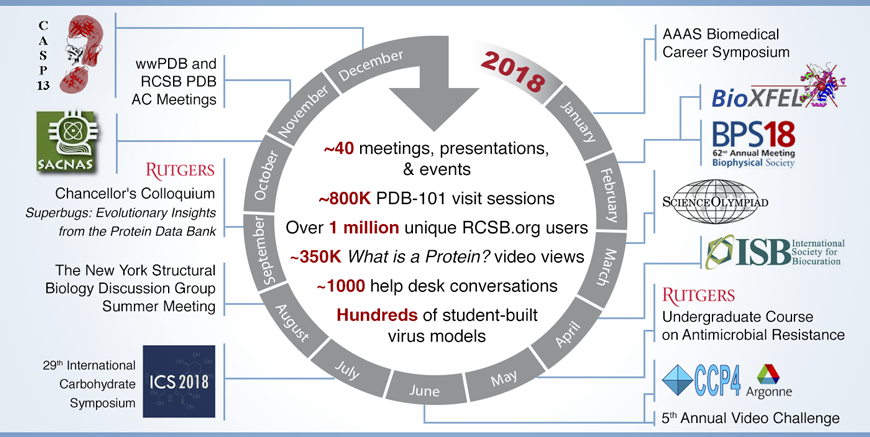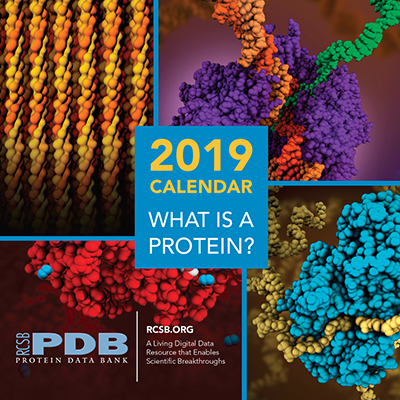Message from RCSB PDB

2018 Milestones
On January 1, 2019, the PDB archive contained 147,610 experimentally-determined 3D structures of proteins, nucleic acids, and complex assemblies that help students and researchers understand all aspects of biomedicine and agriculture, from protein synthesis to health and disease. RCSB.org hosted >1 million unique visitors from around the world.
Outreach and Education was a focus of RCSB PDB activities in 2018. Milestones included:
- ~40 meetings, presentations, & events
- ~800K PDB-101 visit sessions
- ~350K What is a Protein video views
- Hundreds of student-built protein models at science festivals and in classrooms
Celebrate 2019 with a New RCSB PDB Calendar
Celebrate 2019 with a new calendar inspired by the popularity of PDB-101’s What is a Protein? video. Proteins play vital roles in all living organisms. Their specific amino acid sequences give proteins their distinct shapes and chemical characteristics. Proteins rely on the recognition of specific 3D molecular shapes to function correctly for DEFENSE, TRANSPORT, ENZYMES, STRUCTURE, STORAGE, and COMMUNICATION. These protein shapes and functions are highlighted in this calendar and other resources.
Download the calendar as a PDF or access these images and more from PDB-101.

When you subscribe, you will receive email notifications each time this newsletter is published online.
| Snapshot: January 1, 2019 | |
|---|---|
| 147,610 | Released atomic coordinate entries |
| Molecule Type | |
| 136,926 | Proteins, peptides, and viruses |
| 3,285 | Nucleic acids |
| 7,367 | Protein/nucleic acid complexes |
| 32 | Other |
| Experimental Technique | |
| 131,999 | X-ray |
| 12,478 | NMR |
| 2,733 | Electron Microscopy |
| 271 | Hybrid |
| 129 | Other |
| Related Experimental Data Files | |
| 121,872 | Structure factors |
| 9,818 | NMR restraints |
| 3,570 | Chemical shifts |
| 2,791 | 3DEM map files |
